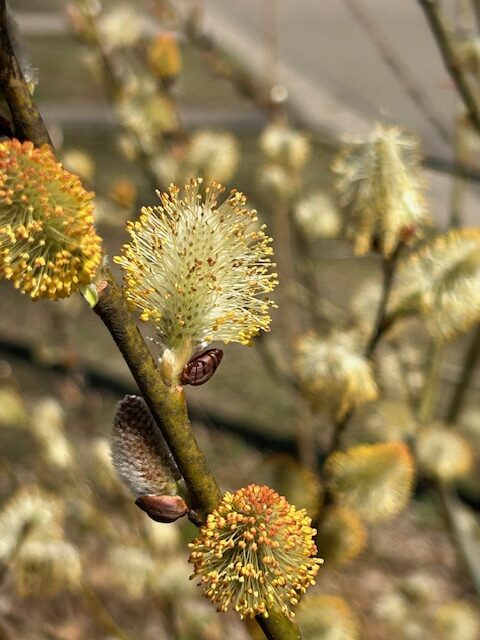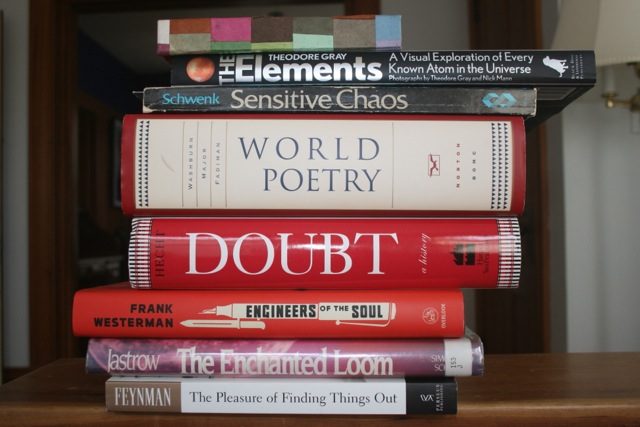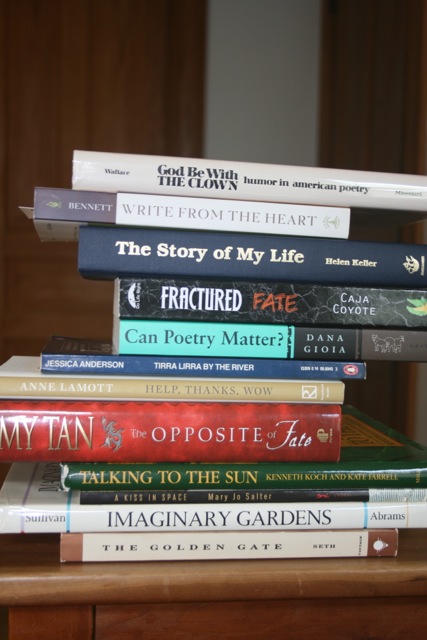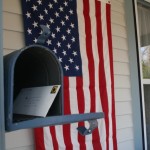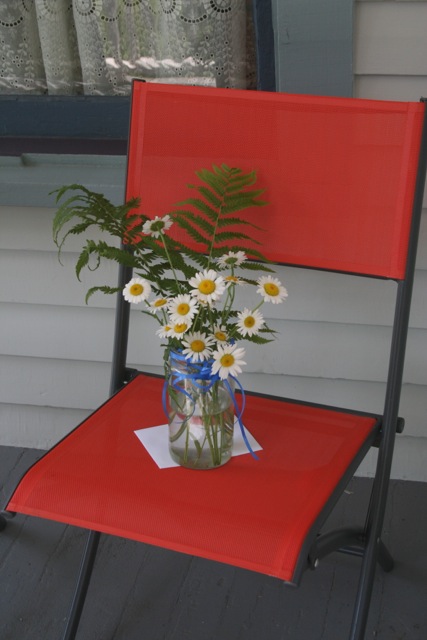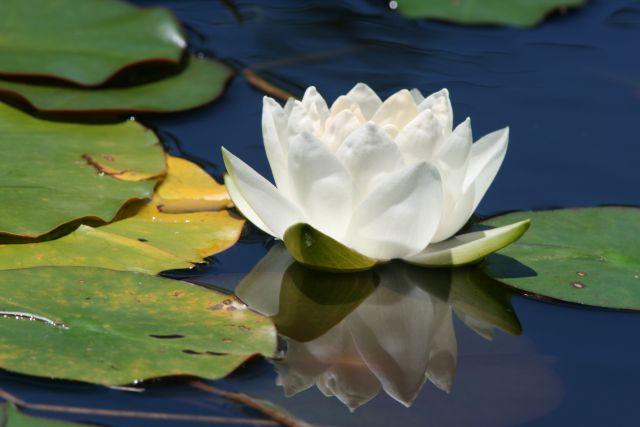
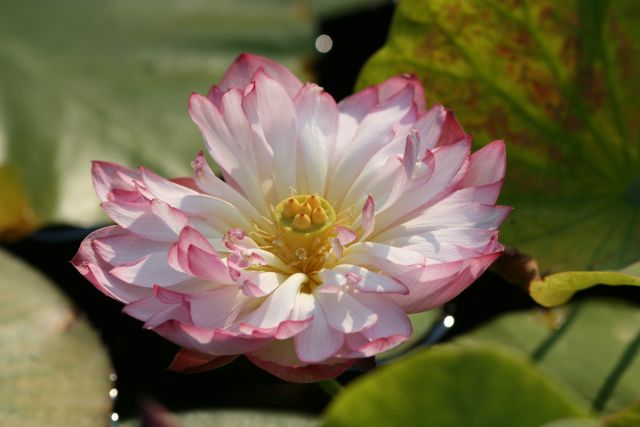
Today, I was not inspired by the few terms offered by Rosendahl for the letter “W”, and so I began to think about plants whose name begin with that letter: weeping willow, walnut (done that!) wisteria, white cedar, white birch, white spruce, white pine, wax begonia, wild ginger (some in our garden soon), wallflower, watermelon, wood anemone, wych elm, wisteria & wood lily/trillium (I have already written poems inspired by these plants in past years), witch hazel, and…water lily, a plant I have admired for years and have been able to get to know better thanks to the kayaking skills of our friend, Tricia Smith, whose home is mere steps from a quiet protected lake that fills with these flowers as the summer advances.
Willows and water lilies. And Shakespeare’s birthday. These thoughts made me think of his character, Ophelia, in Hamlet, specifically the words spoken by Queen Gertrude to convey the pathos of her death off-stage.
There is a willow grows aslant a brook,
That shows his hoar leaves in the glassy stream;
There with fantastic garlands did she come
Of crow-flowers, nettles, daisies, and long purples
That liberal shepherds give a grosser name,
But our cold maids do dead men’s fingers call them:
There, on the pendent boughs her coronet weeds
Clambering to hang, an envious sliver broke;
When down her weedy trophies and herself
Fell in the weeping brook. Her clothes spread wide;
And, mermaid-like, awhile they bore her up:
Which time she chanted snatches of old tunes;
As one incapable of her own distress,
Or like a creature native and indued
Unto that element: but long it could not be
Till that her garments, heavy with their drink,
Pull’d the poor wretch from her melodious lay
To muddy death.
These musings and this literary antecedent, along with memories of visiting some of Monet’s Water Lily paintings at Musée de l’Orangerie when I was a teenager like Ophelia, inspired my Shakespearean sonnet today. And I am grateful to my sister, Karla, for allowing me to use her spectacular images of water lilies to illustrate this post. May their shining beauty, and Shakespeare’s immortal lines, distract you from the flaws of my own hasty effort!
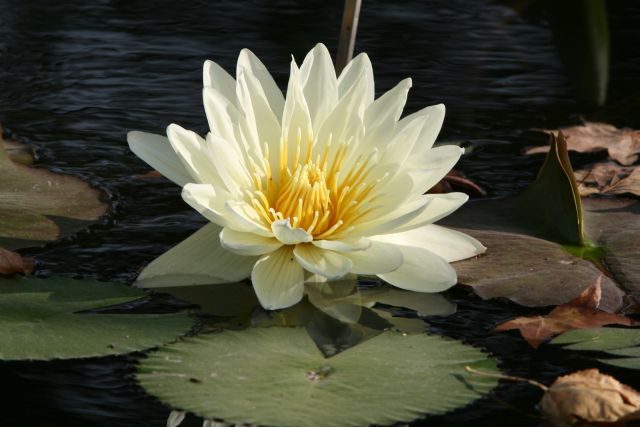
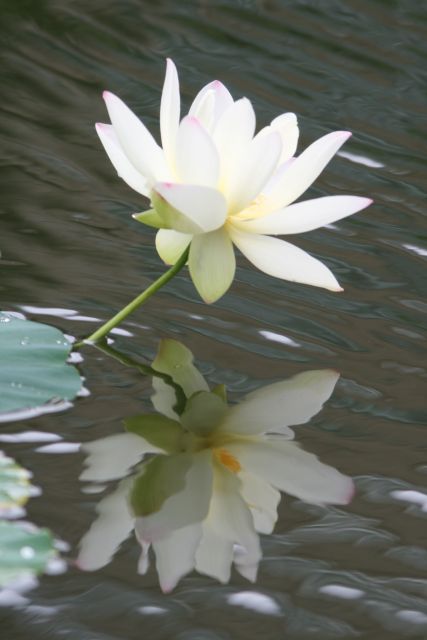
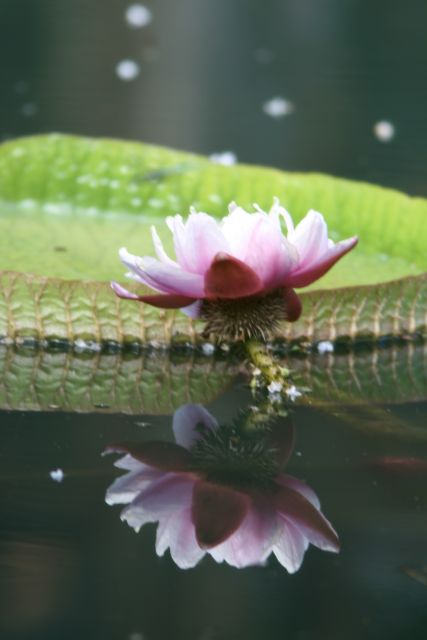
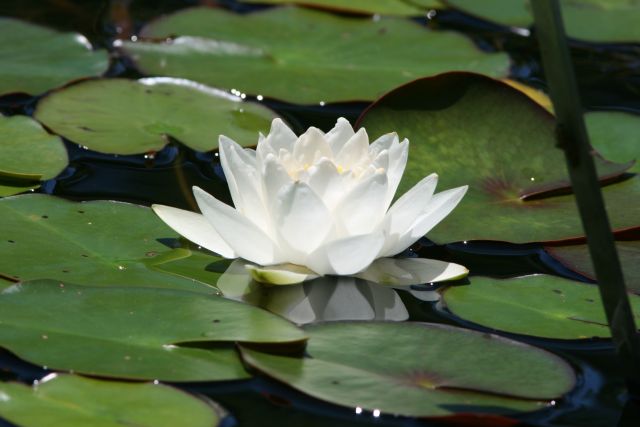
In the course of looking up water lilies, I chanced upon an educational video aiming to debunk or corroborate the widely held belief that the tubers of water lilies can serve as a source for food. This 15-minute summary of several controlled experiments–and definitions of such terms as “edible” and “palatable”–convinced me not to depend on supplementing my food stores with water lilies should I be lingering in the wilderness. (Lotus, apparently, is a different story, botanically and culinarily, than is our native North American cousin.)
Wishing you a day of happy discoveries and no little art, science, and natural beauty! LESLIE
